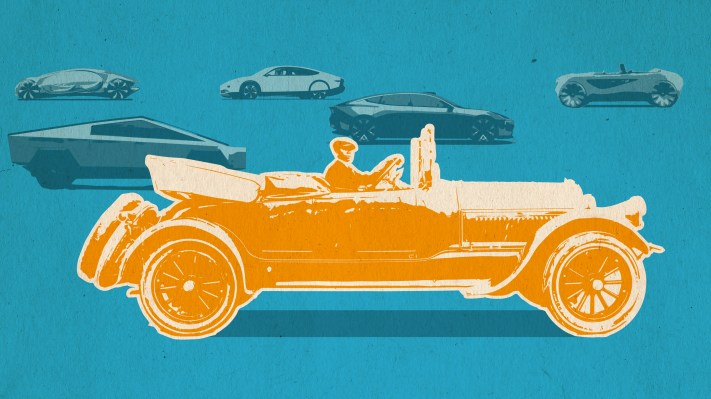When you send a rocket into space, you run into a paradox: Around 90% of the weight of the rocket is the fuel that it needs to lift away from Earth. As the rocket accelerates, three things happen: The speed increases, the rocket gets farther away from Earth (and from the gravitational pull of the planet) and as the fuel burns off, the rocket weighs less and so can accelerate faster.
We face a similar problem in the world of EVs, with an obvious exception. Technically, car batteries get heavier as they are charged, but the difference is so small that you couldn’t measure it even with the most precise car scale. However, that doesn’t matter, because when you add more batteries to a car, it must always carry all those batteries. That’s a problem that’s growing bigger as cars themselves get bigger and heavier.
A 1984 Volkswagen Rabbit only had 90 horsepower, but its average fuel economy was 34 miles per gallon. The 2009 version of that car had almost twice the horsepower and all sorts of technology advantages, but its average fuel consumption is a paltry 24.6 miles per gallon. Sure, the engines got more efficient and it has a bunch of new comfort features. It’s safer, too, but it weighs almost 1,000 lbs more.
Weight, more than almost anything else, affects the fuel economy of a vehicle.
It turns out that batteries are quite heavy. The battery pack on a Tesla Model 3 weighs more than 450 kg (1,000 lbs). The Rivian truck’s battery weighs 800 kg (1,755 lbs). And if you buy an EV Hummer, the battery you’re dragging around weighs more than a 2009 Volkswagen Rabbit at 1,300 kg (2,800 lbs).
There’s a better way. American drivers aren’t going to like it, and GM killing off the Bolt line is a huge leap in the wrong direction.
If you’ve driven elsewhere in the world, you will probably have noticed that cars in other countries are quite different. Mostly, they’re smaller and have comparatively daintier engines, too. That’s because in countries where public transportation is easily available, cars become a bit of a luxury. Big, fast cars are even taxed as luxury items. And gas prices are absolutely bonkers compared to what we are used to in the U.S. So people who need cars typically opt for smaller vehicles that are cheaper to begin with and use less gas.
BMW’s early attempts at building an electric car played to this approach very well. The BMW i-3’s looks may be an acquired taste, but the car made a lot of clever technology choices to keep its weight down, even going as far as using a carbon-fiber monocoque chassis. Unladen, the car weighs 1,200 kg (2,600 lbs) and it gives you 250 km (150 miles) of range. I owned one for a while and it was surprisingly fun to drive. The light weight combined with 170 electric ponies meant it wasn’t very fast, but it was quick enough.
The Honda E uses a similar approach. Though it’s much heavier than the BMW i-3, it’s small and weighs 1,600 kg (3,500 lbs) and gives you a range of 220 km (136 miles) or so. Fiat is flirting with small EVs — the Topolino is adorable AF but goes even farther in the other direction.
Turning a car electric doesn’t make it environmentally friendly. Driving an EV Hummer is insane: It has roughly the same range as Tesla Model 3 but instead lugs around a 212 kWh battery. That means it takes 2.5 times longer to charge and uses 2.5 times more electricity to drive the same distance. Electricity might give you the soft and fuzzies because there’s no CO2 billowing out of your tailpipe, but that electricity has to come from somewhere.
Only 20% of the electricity consumed in the U.S. comes from renewable energy sources, 11% comes from coal plants and most of the rest comes from oil. That’s pathetic, but it’s a problem that’s hard to solve, especially as electricity demands increase. You could argue that your electric car gets cleaner as the electrification tilts more toward renewable and clean energy sources, but that isn’t a good argument if you replace your gas-guzzling SUV with an EV Hummer.
Automotive efficiency is important, regardless of where your fuel is coming from. The U.S. has for too many years relied on cars, trucks and SUVs that are simply too big for their use cases. If you must drive, smaller, more efficient cars are the future of day-to-day driving. For occasional hauling, it’s possible to rent a truck or a van. All of this boils down to choices and changes in behavior.
It sucks that GM is retiring the Bolt and Bolt EUV cars. With a price tag under $25,000, the Bolts were some of the best-selling, reasonably sized and somewhat affordable electric cars in the U.S. We are moving in the wrong direction: Bigger and more expensive means that EV ownership is becoming less accessible not more so.
